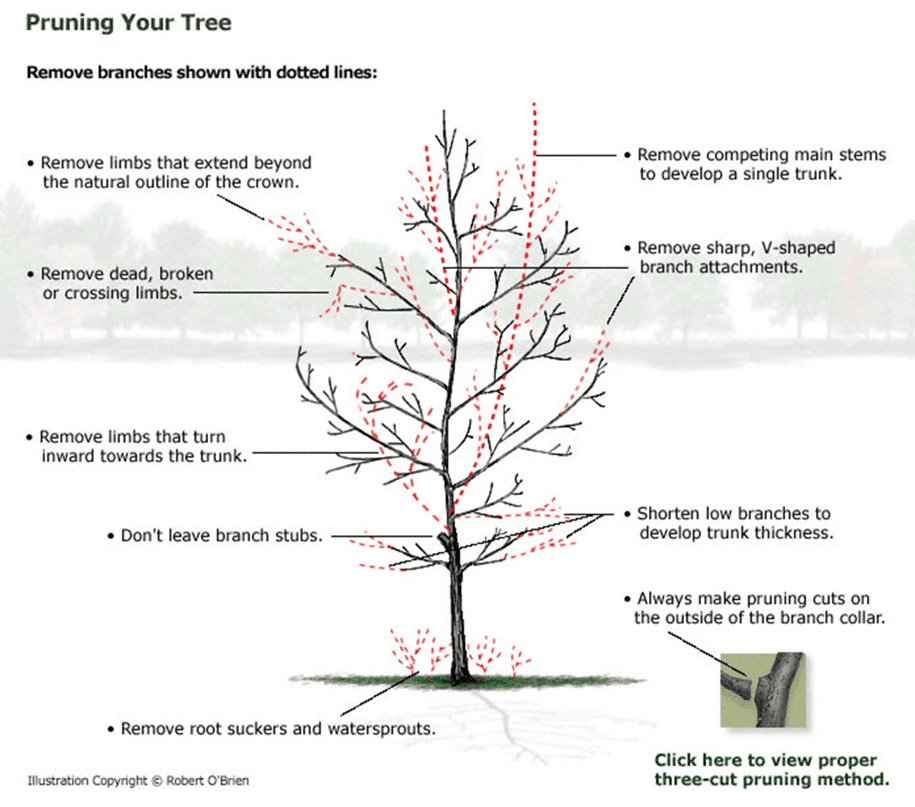Interviews with Experts
10 Tips: Soil Nutrients’ Influence on Tree Care

I’ve got some exciting news for all you tree enthusiasts out there! Get ready to unlock the secrets of soil nutrients and their incredible influence on tree care.
In this article, I’ll be sharing 10 invaluable tips that will revolutionize the way you approach your tree maintenance.
From understanding soil deficiencies to balancing nutrient ratios, we’ll dive deep into the world of tree nutrition.
So grab your gardening gloves and let’s embark on this journey to healthier, happier trees together!
Understanding Soil Nutrient Deficiencies
Understanding soil nutrient deficiencies is crucial for maintaining the health and vitality of trees. Nutrients are essential for tree growth and development, and deficiencies can lead to various problems such as stunted growth, yellowing leaves, and increased susceptibility to diseases and pests.
Trees require a balanced supply of nutrients, including macronutrients like nitrogen, phosphorus, and potassium, as well as micronutrients like iron, zinc, and manganese. These nutrients play important roles in processes such as photosynthesis, root development, and overall plant metabolism.

By understanding soil nutrient deficiencies, tree owners and caretakers can take appropriate measures to ensure that trees receive the necessary nutrients for optimal growth and health.
Transitioning to the next section, the importance of soil pH for tree health will be discussed.
Importance of Soil Ph for Tree Health
Continuing from the previous subtopic, I frequently observe the significance of soil pH for the health of trees. The pH level of the soil plays a vital role in determining the availability of essential nutrients for tree growth.
Here are a couple of emotional reasons why maintaining the right soil pH is crucial for tree health:
- Optimal nutrient absorption: Adequate soil pH ensures that trees can absorb nutrients effectively, promoting their overall well-being. It provides them with a sense of belonging in their environment, allowing them to thrive and flourish.
- Resilience against diseases: Proper soil pH creates an environment that discourages the growth of harmful pathogens. This instills a sense of security in trees, protecting them against diseases and allowing them to stay healthy.
Understanding the importance of soil pH is crucial for tree care.
Now, let’s delve into the next section, where we’ll explore macronutrients and their vital role in maintaining tree health.
Macronutrients and Their Role in Tree Care
To effectively care for trees, it’s essential to understand the role of macronutrients in their overall health.

Macronutrients are essential elements that trees require in large quantities for growth and development. The three primary macronutrients are nitrogen (N), phosphorus (P), and potassium (K).
Nitrogen is responsible for leaf and stem growth, phosphorus promotes root development and flowering, while potassium helps with overall tree health and disease resistance.
These macronutrients are typically obtained by trees from the soil through their root systems. However, soil deficiencies or imbalances can hinder nutrient uptake and negatively impact tree health.
Therefore, it’s crucial to regularly test soil nutrient levels and provide supplemental macronutrients as necessary to ensure optimal tree growth and vitality.
Micronutrients and Their Impact on Tree Growth
Micronutrients play a crucial role in tree growth and development. Deficiency in micronutrients can have detrimental effects on trees, such as stunted growth, leaf discoloration, and decreased resistance to diseases.
It’s important to maintain optimal levels of micronutrients in the soil to ensure healthy tree growth and vitality.
Micronutrient Deficiency Effects
As an arborist, I’ve personally witnessed the significant impact that micronutrient deficiencies can have on tree growth and overall health. Micronutrients, although required in small quantities, play a crucial role in various physiological and biochemical processes within trees. When these essential elements are lacking, trees can experience detrimental effects that can hinder their growth and vitality.

Here are two examples of the emotional impact micronutrient deficiencies can have on trees:
- Stunted growth: Micronutrient deficiencies can lead to stunted growth, causing trees to appear weak and underdeveloped. This can evoke feelings of frustration and disappointment, as we expect our trees to thrive and flourish.
- Leaf discoloration: Another emotional blow comes from the discoloration of leaves due to micronutrient deficiencies. Yellowing or browning of leaves can create a sense of unease and concern, as it’s a visible sign of the tree’s struggle for proper nutrition.
Understanding the emotional toll of micronutrient deficiencies emphasizes the importance of addressing these issues promptly.
Transitioning into the subsequent section about optimal micronutrient levels, let’s explore how we can ensure our trees receive the necessary nutrients for optimal growth.
Optimal Micronutrient Levels
One crucial aspect of tree care involves maintaining optimal levels of micronutrients for maximum growth and vitality. Micronutrients are essential elements that trees require in small quantities for proper functioning and development. These include iron (Fe), manganese (Mn), zinc (Zn), copper (Cu), boron (B), molybdenum (Mo), and chlorine (Cl).
Each micronutrient plays a specific role in tree growth and metabolism. For example, iron is crucial for chlorophyll synthesis, while manganese is necessary for enzyme activation. Zinc aids in hormone production and protein synthesis, while copper is involved in photosynthesis and carbohydrate metabolism. Boron plays a role in cell wall formation, and molybdenum is vital for nitrogen fixation. Chlorine helps regulate water movement within the tree.
Maintaining optimal levels of these micronutrients ensures that trees can carry out their physiological processes efficiently, leading to healthy growth and overall vitality.
Assessing Soil Fertility for Optimal Tree Care
When it comes to tree care, assessing soil fertility is crucial.

By conducting soil tests, we can determine the nutrient levels and pH balance. This allows us to make informed decisions about fertilizer application strategies.
This helps ensure that trees receive the necessary nutrients for optimal growth and health.
Soil Testing Importance
To ensure optimal tree care, it’s essential to assess soil fertility through soil testing. By conducting soil tests, we can determine the nutrient levels and pH balance of the soil, which are crucial factors in supporting healthy tree growth.
Soil testing provides valuable information that allows us to make informed decisions about the type and amount of fertilizers to apply, as well as any necessary amendments to improve the soil quality. It also helps us identify nutrient deficiencies or excesses, enabling us to address them promptly and prevent potential tree health issues.
Fertilizer Application Strategies
As an arborist, I assess the soil fertility to develop effective fertilizer application strategies for optimal tree care. Understanding the nutrient levels in the soil is crucial for maintaining the health and vigor of trees.
Soil testing allows me to determine the specific nutrient deficiencies or excesses that may be present. By measuring the pH level, organic matter content, and nutrient concentrations, I can tailor the fertilizer application accordingly.
For example, if the soil is lacking in nitrogen, I’d recommend a nitrogen-rich fertilizer. On the other hand, if the soil has high phosphorus levels, a fertilizer with lower phosphorus content would be appropriate.

Improving Soil Structure for Better Nutrient Absorption
In my experience, I’ve found that by amending the soil with organic matter, tree roots are able to access and absorb nutrients more efficiently. This is because organic matter improves soil structure, allowing for better water retention and aeration, which in turn promotes root growth and nutrient absorption.
Here are a few ways in which improving soil structure can benefit trees:
- Enhanced nutrient availability: When the soil structure is improved, nutrients are more readily available to the tree roots. This ensures that the tree receives the necessary nutrients for optimal growth and development.
- Reduced nutrient leaching: A well-structured soil holds onto nutrients, preventing them from leaching away. This means that the tree can make the most of the applied nutrients, reducing the need for excessive fertilizer use.
Organic Matter: a Key Component for Healthy Soil
Organic matter plays a crucial role in maintaining healthy soil and promoting the overall fertility of the land. It’s a key component that enhances nutrient absorption, allowing trees and plants to thrive.
Importance of Organic Matter
I rely on the nourishing properties of organic matter to maintain healthy soil for optimal tree care. Organic matter plays a crucial role in providing essential nutrients, improving soil structure, and enhancing water-holding capacity.
Here are two reasons why organic matter is vital for healthy soil:
- Nutrient cycling: Organic matter acts as a reservoir of nutrients, releasing them slowly over time. This ensures a steady supply of essential elements for tree growth and development. Additionally, it promotes microbial activity, facilitating the breakdown of organic matter and the release of nutrients in a form that trees can readily absorb.
- Soil structure improvement: Organic matter helps create a well-structured soil that allows for proper root growth and development. It enhances soil aggregation, improving porosity and water infiltration. This, in turn, prevents soil compaction and erosion, providing a stable environment for tree roots.
Nutrient Absorption in Soil
One essential component for healthy soil is the absorption of nutrients by plants. Nutrient absorption in soil is a vital process that ensures the availability of essential elements for plant growth and development.
Organic matter plays a key role in this process, as it improves the soil’s ability to hold and release nutrients. The organic matter acts as a reservoir, storing nutrients and making them accessible to plants.

As plants absorb water from the soil, they also take up the dissolved nutrients present in the soil solution. The roots of plants have specialized structures, such as root hairs, that increase the surface area for nutrient absorption.
This allows plants to extract nutrients from the soil and utilize them for various physiological functions, ultimately contributing to their overall health and vigor.
Therefore, maintaining healthy levels of organic matter in soil is crucial for promoting optimal nutrient absorption and supporting the growth of plants.
Soil Fertility and Health
Continuing from the previous subtopic, the role of organic matter in soil fertility and health can’t be overstated. Organic matter, such as decomposed plant and animal material, plays a vital role in creating a healthy soil ecosystem.
Here are two reasons why organic matter is crucial for soil health:
- Improves soil structure: Organic matter acts as a binding agent, improving the soil’s structure and preventing compaction. This allows for better water infiltration, root penetration, and nutrient absorption, ultimately promoting healthier plant growth.
- Enhances nutrient availability: Organic matter serves as a nutrient reservoir, slowly releasing essential elements to plants over time. It also enhances the cation exchange capacity (CEC) of the soil, increasing its ability to retain and supply nutrients to plants.
Balancing Nutrient Ratios for Tree Nutrition
To achieve optimal tree nutrition, it’s essential to balance the ratios of nutrients in the soil. Trees require a combination of macronutrients and micronutrients to thrive and remain healthy. Macronutrients, such as nitrogen, phosphorus, and potassium, are needed in larger quantities, while micronutrients, like iron, zinc, and manganese, are required in smaller amounts. These nutrients play crucial roles in various physiological processes, including photosynthesis, root development, and disease resistance.
Balancing the nutrient ratios is vital because an imbalance can lead to nutrient deficiencies or toxicities, which can negatively impact tree growth and overall health. For example, an excess of nitrogen can result in excessive vegetative growth but weak branches, making trees susceptible to damage from wind and storms. On the other hand, a deficiency in phosphorus can lead to stunted growth and reduced fruit production.

Regular soil testing is crucial to determine nutrient levels and ratios accurately. Based on the test results, appropriate fertilizers can be applied to correct any imbalances. Additionally, organic matter amendments, such as compost or manure, can help improve soil structure and nutrient availability over time.
Managing Soil Moisture for Proper Nutrient Uptake
To ensure proper nutrient uptake, it’s crucial to effectively manage soil moisture levels. Maintaining optimal soil moisture not only supports the overall health of trees but also promotes nutrient absorption.
Here are two key reasons why managing soil moisture is essential for tree care:
- Preventing water stress: Adequate soil moisture prevents water stress, which occurs when trees don’t receive enough water to meet their needs. Water stress can lead to nutrient deficiencies and weakened tree health.
- Facilitating nutrient movement: Proper soil moisture levels ensure that nutrients are available and can move through the soil to tree roots. Nutrients dissolve in water and are absorbed by tree roots for growth and development.
By understanding the importance of managing soil moisture, tree caregivers can provide an environment that promotes nutrient uptake and supports tree health.
Now let’s explore how enhancing soil health through sustainable practices can further optimize tree care.
Enhancing Soil Health Through Sustainable Practices
To optimize tree care, I prioritize implementing sustainable practices that enhance soil health.
Enhancing soil health is crucial for the long-term growth and vitality of trees.

One effective way to achieve this is through the use of organic amendments, such as compost or mulch. These materials improve soil structure, water retention, and nutrient availability. Compost, for instance, adds organic matter to the soil, promoting beneficial microbial activity and nutrient cycling.
Mulch helps conserve soil moisture, suppress weeds, and regulate soil temperature.
Additionally, practicing proper irrigation techniques, such as deep watering and utilizing water-efficient systems, can prevent water wastage and promote healthy root development.

Hello there! I’m Logan Foster, the green-thumbed social media marketer behind the vibrant world of 1800TreeGuy.com. With roots firmly planted in arboriculture, I’ve branched out to help clients cultivate their dream outdoor spaces, one leafy canopy at a time. My knack for nurturing nature is more than a profession—it’s a way of life.
When I’m not talking trees and teaching the art of arboreal care, you can find me cheering on the Bulldogs—my alma mater’s pride and my forever team. My environmental studies there didn’t just teach me about ecosystems; they instilled a lifelong passion for protecting our planet.
Off the clock, I’m an adventurer at heart. Whether it’s trekking the Appalachian trails, pedaling down a mountain path, or crafting guides to share the wonders of the wild, I’m happiest with soil under my nails and the sun on my face. And let’s not forget Yoda, my pug sidekick. He may not have mastered the art of stillness, but his joyful grins are my daily dose of happiness.
I’m all about making connections—between people and the great outdoors and between my clients and their ideal landscape visions. My approach is personal; every tree has a story, and every garden reflects its caretaker.
If you want to green your scene or share in my outdoor escapades, give me a shout on Instagram or Facebook. Let’s cultivate a conversation and grow a community rooted in a love for the lush life.







